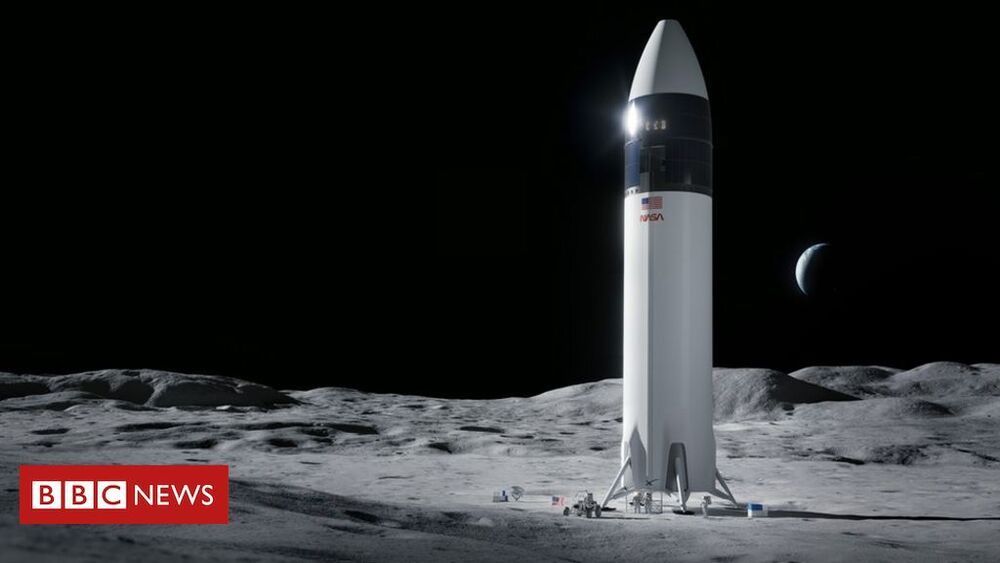On April 17, 2021, the New Horizons spacecraft passed 50 astronomical units — 50 times Earth’s distance from the sun — while speeding toward interstellar space. It also captured an image of another earthly spacecraft, even farther out.
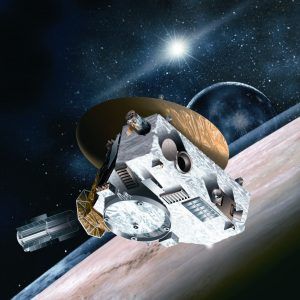

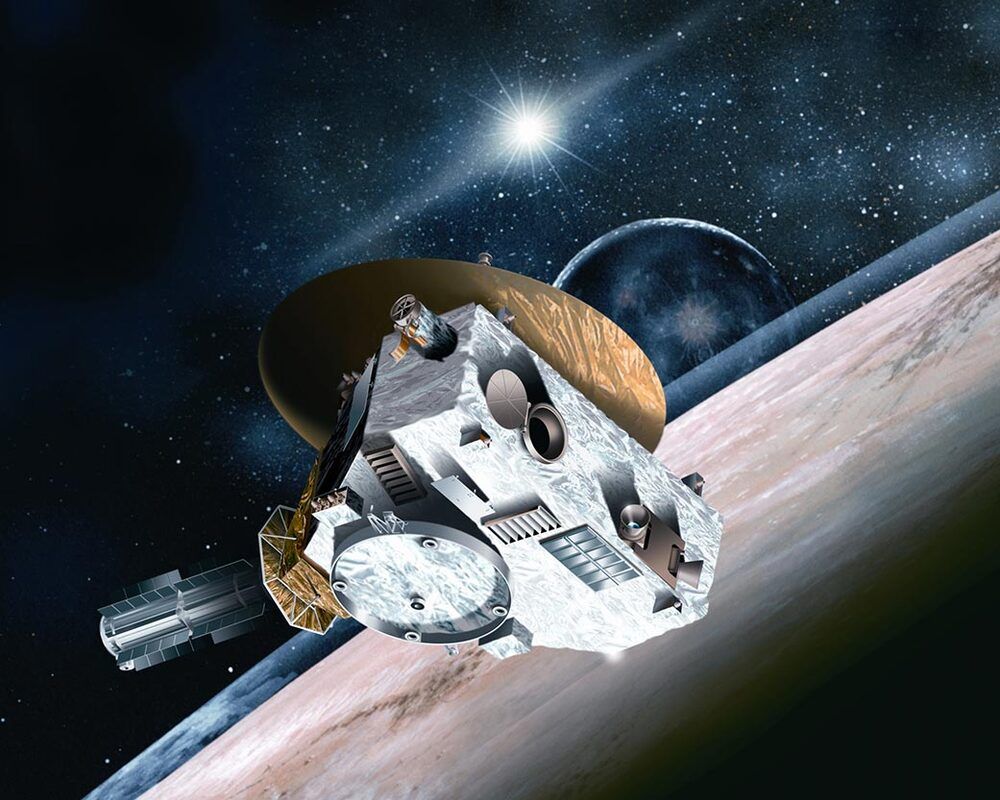
In the weeks following its launch in early 2006, when NASA ’s New Horizons was still close to home, it took just minutes to transmit a command to the spacecraft, and hear back that the onboard computer received and was ready to carry out the instructions.
As New Horizons crossed the solar system, and its distance from Earth jumped from millions to billions of miles, that time between contacts grew from a few minutes to several hours. And on April 17 at 12:42 UTC (or April 17 at 8:42 a.m. EDT), New Horizons reached a rare deep-space milepost – 50 astronomical units from the Sun, or 50 times farther from the Sun than Earth is.
Here’s one way to imagine just how far 50 AU is: Think of the solar system laid out on a neighborhood street; the Sun is one house to the left of “home” (or Earth), Mars would be the next house to the right, and Jupiter would be just four houses to the right. New Horizons would be 50 houses down the street, 17 houses beyond Pluto!
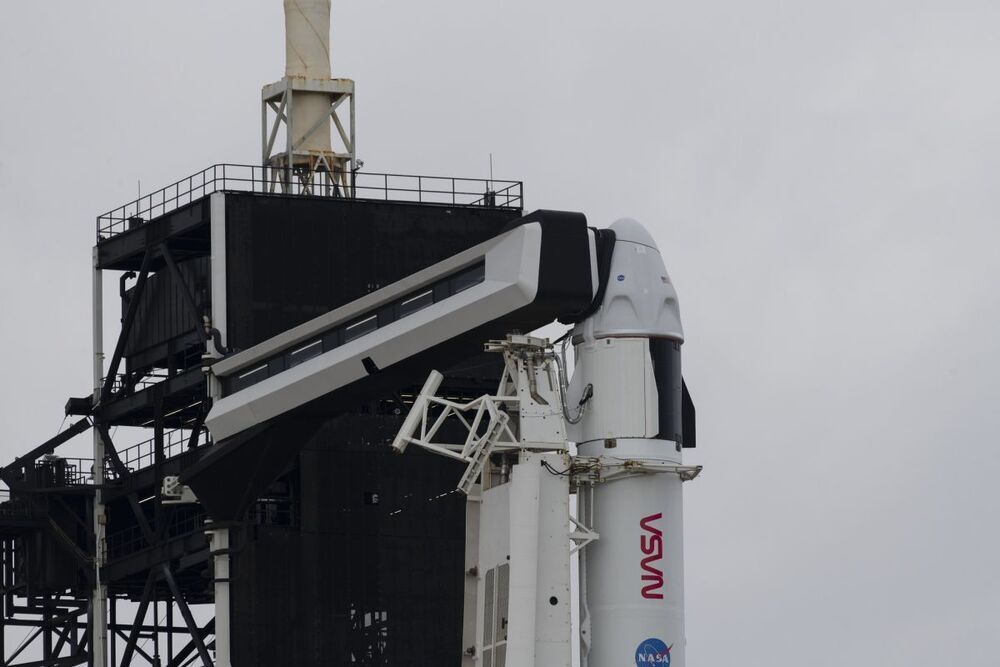
Liftoff is scheduled for Thursday, April 22.
CAPE CANAVERAL, Fla. — NASA has given SpaceX the official go-ahead for the launch of its next crew mission to the International Space Station.
That mission, called Crew-2, will blast off on a SpaceX Falcon 9 rocket at 6:11 a.m. EST (1011 GMT) on Thursday morning (April 22) from NASA’s historic Pad 39A and Kennedy Space Center in Florida. It will be the second flight of this particular Crew Dragon. The capsule, named “Endeavour,” first carried NASA astronauts Bob Behnken and Doug Hurley to and from the space station last year for the Demo-2 test flight.
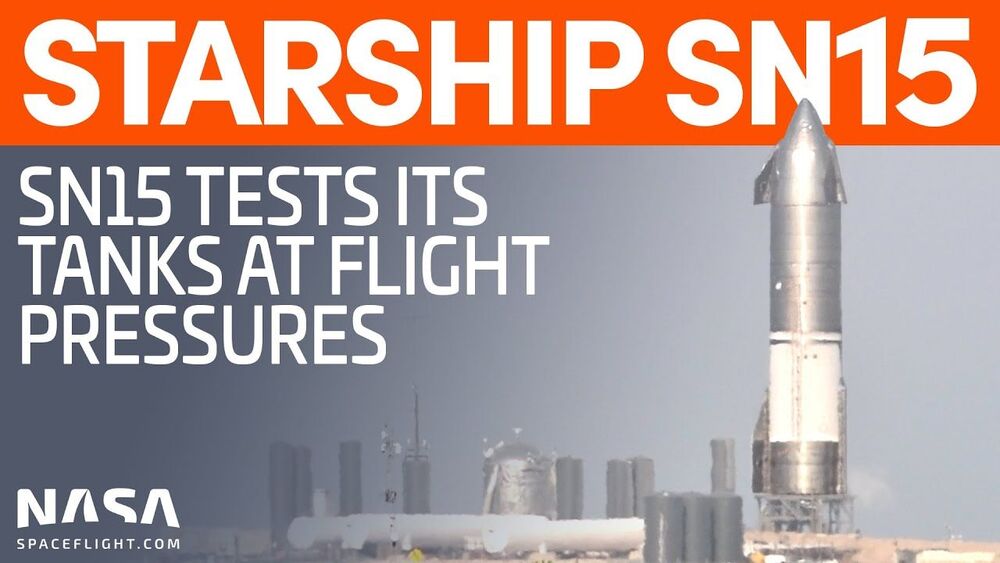
Starship SN15 is expected to undergo a Static Fire test as early as Tuesday to clear the path for a test flight no earlier than Wednesday as SpaceX’s rapidly reusable interplanetary launch and landing system gained a massive sign of NASA approval – and a ton of government cash to boot.
SpaceX was the sole winner of NASA’s initial Human Landing System (HLS) award worth in total more than $2.9 billion, meaning the human return to the Moon’s surface will be via Starship.

Axisymmetric reconnecting plasmoids are secondary magnetic islands, which are formed due to plasmoid instability. At high Lundquist number, the elongated current sheet becomes MHD unstable due to the plasmoid instability (Biskamp Reference Biskamp 1986; Tajima & Shibata Reference Tajima and Shibata 1997; Loureiro, Schekochihin & Cowley Reference Loureiro, Schekochihin and Cowley 2007; Bhattacharjee et al. Reference Bhattacharjee, Huang, Yang and Rogers 2009; Daughton et al. Reference Daughton, Roytershteyn, Albright, Karimabadi, Yin and Bowers 2009; Ebrahimi & Raman Reference Ebrahimi and Raman 2015; Comisso et al. Reference Comisso, Lingam, Huang and Bhattacharjee 2016), an example of spontaneous reconnection. The transition to plasmoid instability was shown to occur when the local Lundquist number ![]() $S = L V_A/\eta$ (
$S = L V_A/\eta$ (![]() $V_A$ is the Alfven velocity based on the poloidal reconnecting magnetic field,
$V_A$ is the Alfven velocity based on the poloidal reconnecting magnetic field, ![]() $L$ is the current sheet length and
$L$ is the current sheet length and ![]() $\eta$ is the magnetic diffusivity) exceeds a critical value (typically a few thousand). Our thruster concept is based on the formation of this elongated current sheet for triggering fast reconnection and plasmoid formation. Effects beyond MHD may also contribute to fast reconnection as the current sheet width (
$\eta$ is the magnetic diffusivity) exceeds a critical value (typically a few thousand). Our thruster concept is based on the formation of this elongated current sheet for triggering fast reconnection and plasmoid formation. Effects beyond MHD may also contribute to fast reconnection as the current sheet width (![]() $\delta _{\mathrm {sp}}$) becomes smaller than the two-fluid or kinetic scales (Cassak, Shay & Drake Reference Cassak, Shay and Drake 2005; Ji & Daughton Reference Ji and Daughton 2011). However, for thruster application we desire system-size MHD plasmoid formation (with radius ranging from a few to tens of centimetres), where kinetic effects become subdominant for low-temperature plasma (in the range of a few eV to a couple of tens of eV). Here, the MHD plasmoid-mediated reconnection occurs at high Lundquist number (about
$\delta _{\mathrm {sp}}$) becomes smaller than the two-fluid or kinetic scales (Cassak, Shay & Drake Reference Cassak, Shay and Drake 2005; Ji & Daughton Reference Ji and Daughton 2011). However, for thruster application we desire system-size MHD plasmoid formation (with radius ranging from a few to tens of centimetres), where kinetic effects become subdominant for low-temperature plasma (in the range of a few eV to a couple of tens of eV). Here, the MHD plasmoid-mediated reconnection occurs at high Lundquist number (about ![]() $104$ and above), which is achieved at high magnetic field rather than low magnetic diffusivity (or high temperature). To form a single or multiple X-point reconnection site, oppositely directed biased magnetic field (in the range of 20–1000 G) is injected through a narrow gap in an annular device. We find that the plasmoid structures demonstrated in resistive (or extended) MHD simulations produce high exhaust velocity and thrust that scale favourably with applied magnetic field. It will be shown that the fluid-like magnetic plasmoid loops continuously depart the magnetic configuration about every
$104$ and above), which is achieved at high magnetic field rather than low magnetic diffusivity (or high temperature). To form a single or multiple X-point reconnection site, oppositely directed biased magnetic field (in the range of 20–1000 G) is injected through a narrow gap in an annular device. We find that the plasmoid structures demonstrated in resistive (or extended) MHD simulations produce high exhaust velocity and thrust that scale favourably with applied magnetic field. It will be shown that the fluid-like magnetic plasmoid loops continuously depart the magnetic configuration about every ![]() $10 \ \mathrm {\mu } \textrm {s}$ with Alfvenic velocities in the range of 20 to
$10 \ \mathrm {\mu } \textrm {s}$ with Alfvenic velocities in the range of 20 to ![]() $500\ \textrm {km}\ \textrm {s}^{-1}$, and the thrust does not ideally depend on the mass of the ion species of the plasma.
$500\ \textrm {km}\ \textrm {s}^{-1}$, and the thrust does not ideally depend on the mass of the ion species of the plasma.
Figure 1 shows the main parts of the reconnecting plasmoid thruster in an annular configuration. Magnetic helicity injection starts with an initial injector poloidal field (![]() $B^{\mathrm {inj}}_P$, in blue, with radial,
$B^{\mathrm {inj}}_P$, in blue, with radial, ![]() $R$, and vertical,
$R$, and vertical, ![]() $Z$, components), connecting the inner and outer biased plates in the injector region. Gas is injected and partially ionized by applying an injector voltage
$Z$, components), connecting the inner and outer biased plates in the injector region. Gas is injected and partially ionized by applying an injector voltage ![]() $V_{\mathrm {inj}}$ of a few hundred volts between the inner and outer plates (indicated by numbers 1 and 2), which also drives a current
$V_{\mathrm {inj}}$ of a few hundred volts between the inner and outer plates (indicated by numbers 1 and 2), which also drives a current ![]() $I_{\mathrm {inj}}$ along the open magnetic field lines. Plasma and open field lines expand into the vessel when the Lorentz force
$I_{\mathrm {inj}}$ along the open magnetic field lines. Plasma and open field lines expand into the vessel when the Lorentz force ![]() $J_{\mathrm {pol}} \times B_{\phi }$ exceeds the field line tension of the injector poloidal field. The azimuthal (
$J_{\mathrm {pol}} \times B_{\phi }$ exceeds the field line tension of the injector poloidal field. The azimuthal (![]() $\phi$) field shown here,
$\phi$) field shown here, ![]() $B_{\phi }$, is generated through injector current (
$B_{\phi }$, is generated through injector current (![]() $I_{\mathrm {inj}}$) alone (by applying
$I_{\mathrm {inj}}$) alone (by applying ![]() $V_{\mathrm {inj}}$), or can be provided externally.
$V_{\mathrm {inj}}$), or can be provided externally.
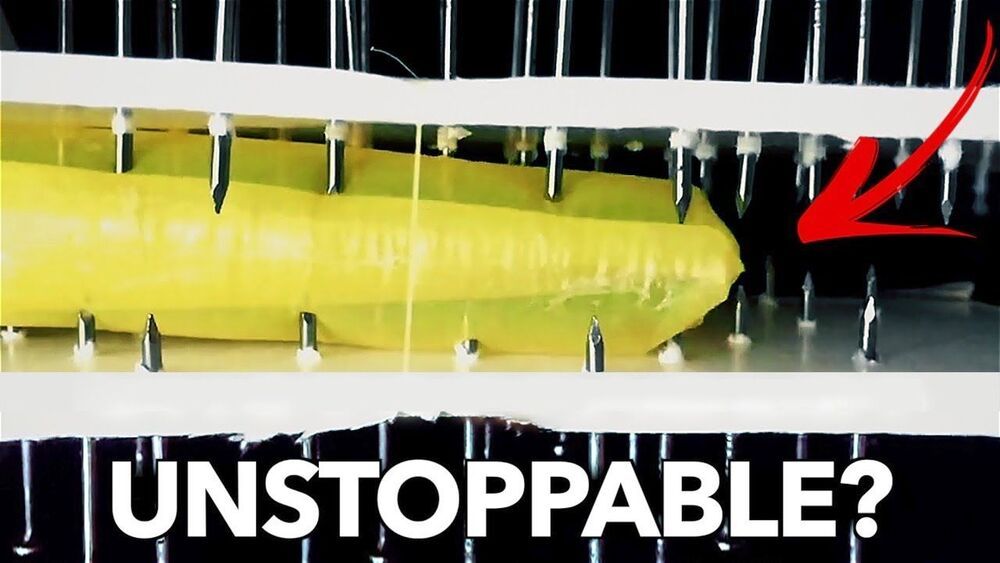

This robot has applications to archaeology, space exploration, and search and rescue — with a simple elegant design inspired by a plant. Sign up to Morning Brew for free today: https://ve42.co/mb.
Make your own Vine Robot! — https://www.vinerobots.org.
Special thanks to A/Prof. Elliot Hawkes, Nicholas Naclerio, Margaret Coad, David Haggerty for appearing in this video and showing off your amazing robots. For more info on vine (and other types of) robots check out https://ve42.co/HawkesLab, and https://ve42.co/CHARM
B-roll footage of robots from the supplementary materials of (Hawkes et al., 2017) https://ve42.co/VineVideos, and from Stanford University https://ve42.co/StanfordVideo.
Additional info on the intubation vine robot here: https://www.wardenchem.com/vine.
References: Hawkes, E. W., Blumenschein, L. H., Greer, J. D., & Okamura, A. M. (2017). A soft robot that navigates its environment through growth. Science Robotics, 2. — https://ve42.co/Hawkes2017
Coad, M. M., Blumenschein, L. H., Cutler, S., Zepeda, J. A. R., Naclerio, N. D., El-Hussieny, H.,… & Okamura, A. M. (2019). Vine robots: Design, teleoperation, and deployment for navigation and exploration. IEEE Robotics & Automation Magazine, 27, 120-132. — https://ve42.co/Coad2019
Blumenschein, L. H., Coad, M. M., Haggerty, D. A., Okamura, A. M., & Hawkes, E. W. (2020). Design, modeling, control, and application of everting vine robots. Frontiers in Robotics and AI, 7. — https://ve42.co/Blumenschein2020

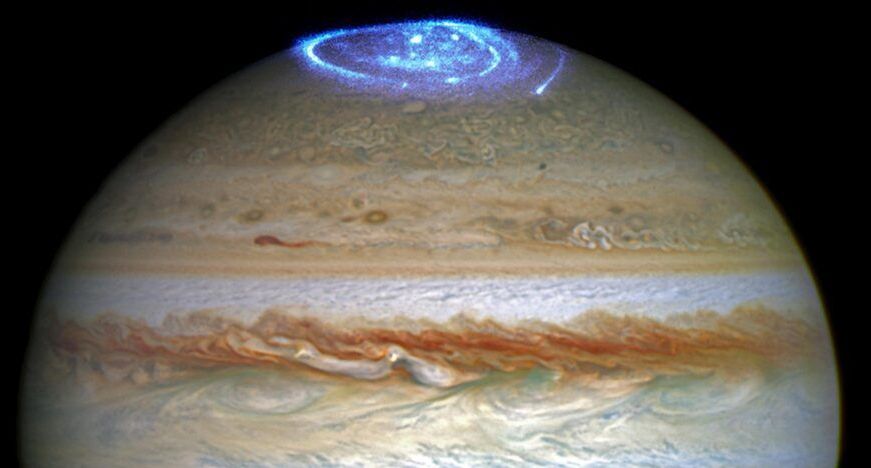
Auroral displays continue to intrigue scientists, whether the bright lights shine over Earth or over another planet. The lights hold clues to the makeup of a planet’s magnetic field and how that field operates.
New research about Jupiter proves that point — and adds to the intrigue.
Peter Delamere, a professor of space physics at the University of Alaska Fairbanks Geophysical Institute, is among an international team of 13 researchers who have made a key discovery related to the aurora of our solar system’s largest planet.
